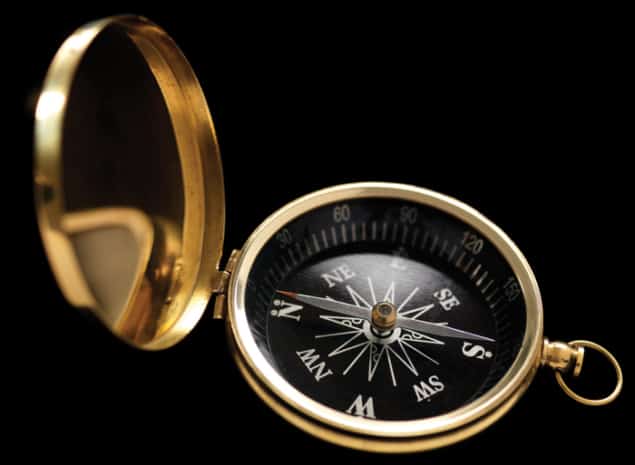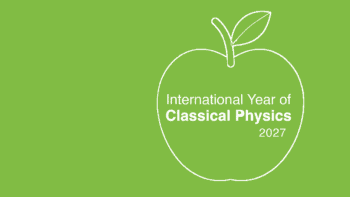Hans Christian Ørsted: Reading Nature’s Mind
Dan Charly Christensen
2013 Oxford University Press £39.99hb 768pp

While giving a lecture on electricity, electrochemistry and magnetism in the spring of 1820, the Danish scientist Hans Christian Ørsted noticed something remarkable: the magnetic needle he was using for one of his demonstrations was deflected by an electric current in a nearby wire. The discovery of this (at first sight) simple and feeble phenomenon came as a great surprise to the scientific community. According to established beliefs among leading scientists in Paris (then the centre of physics and chemistry research), an interaction between electricity and magnetism was not to be expected. Therefore, nobody in Paris was looking for such a connection. But as soon as its existence was realized, electromagnetism sparked a new and extremely fruitful area of physics research. Its discovery was a key step towards understanding the unification of the forces of nature, and it is hard to imagine what life would look like today were it not for the countless telecommunication inventions based on electromagnetism.
The discovery of electromagnetism made Ørsted’s name, ensuring him instant immortality and a place in the history of science. But what is the story behind this important finding, and who was this great Dane whom the renowned British chemist, Humphry Davy, described as “a man of simple manners, of no pretensions and not of extensive resources; but ingenious, and a little of a German metaphysician”? The answers are provided in Reading Nature’s Mind, Dan Charly Christensen’s excellent biography of Ørsted and his times. It is the first complete biography of Ørsted ever written and will probably be the most comprehensive ever to appear.
The picture of Ørsted that emerges in Christensen’s book is of an enterprising and innovative scientific polymath who had been engaged in such diverse intellectual ventures as science, philosophy, art and poetry long before his career-making discovery. Unlike his French colleagues, Ørsted expected a connection between electricity and magnetism to exist and had been looking for one for years. His research involved seeking connections between such phenomena as electricity, magnetism, chemical affinity, heat and light. In his view, the invention of the first chemical battery, the Voltaic pile, in 1800 and the fruitful field of electrochemistry that developed from it were the first important steps in this new programme. For Ørsted, the discovery of electromagnetism was therefore a culmination of his research project.
As citizens of a tiny country on the periphery of the European cultural, scientific and intellectual spheres, Danish intellectuals and scientists have always travelled abroad in order to enhance their qualifications, establish scientific liaisons and learn about research at the forefront of their fields. Ørsted was no exception: he undertook three major journeys around Europe and met and corresponded avidly with most of the leading scientists and scholars of the time. The international flavour of his life lends something extra to his biography, making it a revealing snapshot of the European scientific community and cultural life in the first half of the 19th century.
The narrative of Ørsted’s life in the small but charming Copenhagen bourgeois scene is compellingly written, and Christensen deals with the personal aspects of his life as well as the scientific ones. For the first time Ørsted’s rather innocent love life is analysed, thanks to Christensen’s scrutinizing of Ørsted’s original travel letters. During Ørsted’s first journey abroad in 1801–1803, his fiancée Sophie Probsthein got tired of waiting for him and broke off their engagement, and in 1814 he married his father’s housekeeper, Birgitte Ballum. We share Ørsted’s happiness when he makes his famous discovery and his sorrow when he loses first his beloved sister-in-law Sophie and then, less than a year later, Ørsted’s own daughter, Sophie’s namesake. We follow the lifelong, close alliance between Ørsted and his brother Anders Sandøe Ørsted; although they moved in different intellectual spheres, both men became extremely influential in Copenhagen society, with Anders Sandøe eventually serving as the Danish prime minister. (Two of Ørsted’s younger brothers led more dubious lifestyles, and there are stories about them as well.) We also learn about Ørsted’s friendship with the fairytale writer Hans Christian Andersen and the tribulations experienced by the latter when he first settled in the Danish capital. Ørsted became a patron for the ambitious and vain young writer, and a close filial relationship developed between the “big and little Hans Christian”, as Andersen called them. Ørsted’s scientific epistemology is echoed in some of Andersen’s fairy-tales, such as “The bell”.
Christensen’s aim is to make Ørsted visible in the history of science outside Denmark, and with this new English version (a more or less literal translation from the Danish original, published in 2009) his book seems likely to achieve that goal. The author’s insight into the time period and Danish and European culture – as well as his sensitive description of the characters involved – are unmatched and his love for the topic permeates the text. The inclusion of many striking illustrations makes it a very beautiful book as well, although it is a somewhat heavy one; the Danish version was published in two volumes, but the author chose to squeeze the translation into just one, containing no less than 61 chapters in seven parts.
The title of the book, Reading Nature’s Mind, is well chosen because it captures the essence of Ørsted’s philosophy of nature. Throughout his career, he strove to develop qualitative explanations of phenomena in terms of opposing polar forces that balance each other through a “conflict,” and in his scientific approach and belief he took inspiration from German idealist philosophy. This world-view may have made him more open to discovering electromagnetism, and many scholars (including myself) would call the way the intersection between art, poetry, philosophy and science guided his life “romantic”. However, Christensen makes it clear throughout the book, and particularly in the last chapter, that he does not consider Romanticism an appropriate epithet for Ørsted’s ideas. I disagree with the author on this point, but this did not impair my enjoyment of the book, which is overall a magnificent and superior biography of one of Denmark’s most notable scientists.



